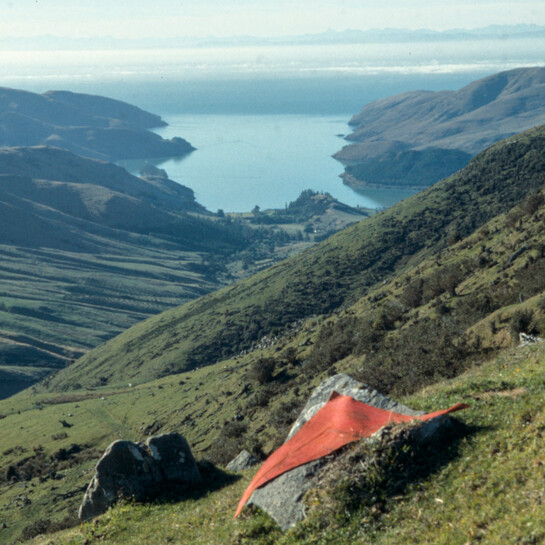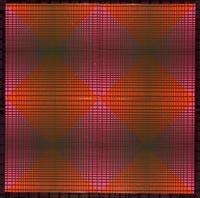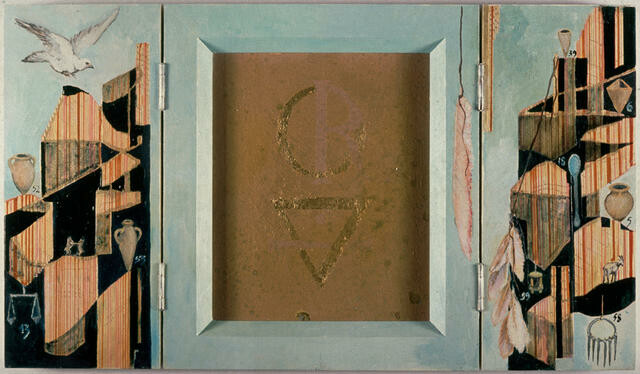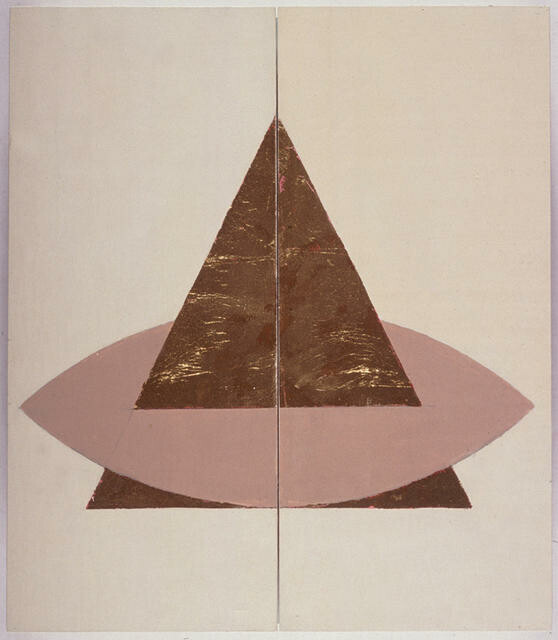Julia Morison
Aotearoa New Zealand, b.1952
Amalgame 48
- 1991
- Oil on wood panel
- Purchased, 1991
- 312 x 543 x 27mm
- 91/81
Location: Monica Richards Gallery
Tags: animals, birds (animals), boxes (containers), circles (plane figures), feather (material), frames (furnishings), goats, motion, numbers, scales (weighing devices), spoons, symbols, triangles (polygons), vases
This work is part of the Amalgame series – fifty-one painted boxes with hinged doors created by Ōtautahi Christchurch artist Julia Morison. The series was inspired by Russian icons in the collection of Dunedin Public Art Gallery, which were used by devout travellers as portable chapels. Each Amalgame is an icon and also a book, with a continuity of elements, such as diagrams, maps, machines, figures, music, ribbons, metals and blood. The doors of each feature a logo, taken from an earlier work of Morison’s called Vademecum, and they open to reveal an alchemical sign surrounded or entwined with imagery collected on her real and imaginative travels, much of it gleaned from old encyclopaedias – collections of another kind.
(Living Archives, 25 October 2025 – 8 March 2026)
Exhibition History
Wunderbox, 28 November 2008 -15 February 2009
In 1990 Christchurch artist Julia Morison won the Moët & Chandon Fellowship and went to live and work in the Champagne region of France. In preparation for the journey, Morison created a number of boxes with hinged doors inspired by Russian icons in the collection of Dunedin Public Art Gallery. Used by devout travellers as portable chapels, these boxes greatly appealed to Morison as she embarked on her own travels. Morison initially completed fifty-five painted ‘books’. The doors of each feature one of fifty-five logos from an earlier work of Morison’s called Vademecum, and open to reveal an alchemical sign surrounded or entwined with imagery that Morison collected on her own real and imaginative travels, much of it gleaned from old encyclopaedias – collections of another kind. The original installation of Amalgame took place in a crypt below a deconsecrated chapel. Morison arranged the fifty-five books on rows of benches below reading lights. They were offered as meditations, to be opened and quietly ‘read’ in a former place of the dead.





